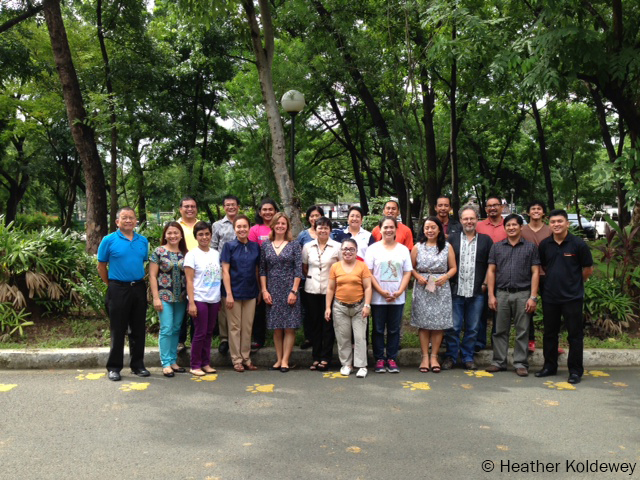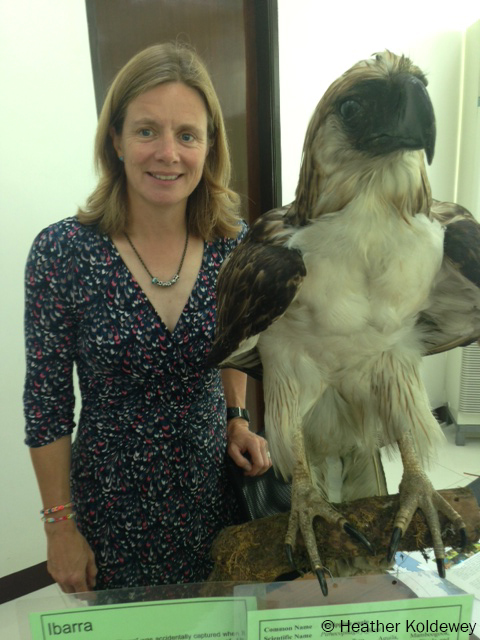As a fish biologist by training, I am more familiar with scales than feathers, so am slightly daunted by running a workshop for the leading bird scientists and conservationists in the Philippines, not helped by the fact that I have come straight off a plane to the meeting! Hosted by the Biodiversity Management Bureau (BMB, the national government agency responsible for nature conservation), we have gathered to discuss the EDGE Birds programme that we launched earlier this year. The Philippines is a well-known biodiversity hotspot, so not surprisingly is home to 11 of the top 100 EDGE Bird species. Our objective is to establish current knowledge on these species and identify priority conservation needs and how the EDGE programme can help mobilise further attention and action.
Before the workshop begins, I find myself face-to-face with a Philippines eagle (EDGE Bird #8). Sadly it’s stuffed, a bird rescued by the BMB that didn’t make it – the sad fate of many of these stunning animals. Even dead, it’s incredibly striking and absolutely huge – worthy of its status as the national bird of the Philippines. EDGE species are, by definition, unusual in how they look and behave and I learned that this enormous bird walks around the forest floor hunting its prey! Unfortunately this makes it very vulnerable to snares and hunting which, combined with habitat loss, are the reasons why there are currently estimated to be less than 400 pairs left.
The workshop brings a mixture of good and bad news. Intensive efforts by the Katala Foundation have dramatically increased the population of Philippines cockatoos (EDGE Bird #82) in Palawan, though there’s still much to be learned about its status in the rest of its range. The Cebu flowerpecker (EDGE Bird #91) has been found at two additional sites in Cebu by the Philippines Biodiversity Conservation Foundation, incredibly significant considering its tiny range. The news for the Sulu hornbill (EDGE Bird #36) is more concerning: due to the unsettled political situation in the area, scientists have struggled to visit the area. The last sightings by the Wild Bird Club reported less than 40 individual birds are likely to be left.
We ended the day with clear next steps identified, including assessing protection levels, updating or developing species action plans and conducting surveys. I learned a huge amount, not least that there is an amazing group of people and organisations passionate about bird conservation and making a difference. Let’s hope we can help give them the EDGE!

